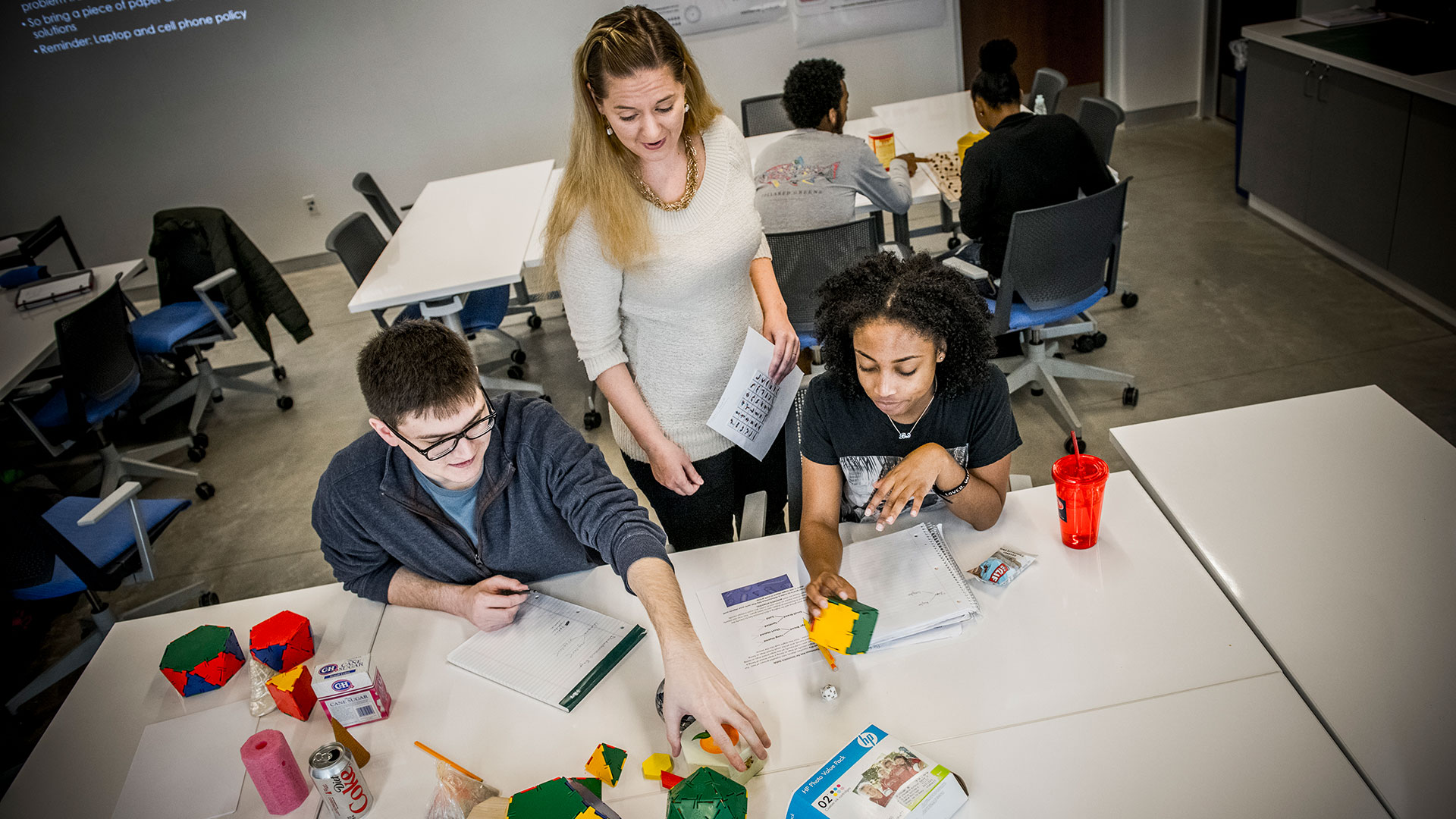Soap Bubbles and Barbie Bungee Jumps
This SMU education prof takes at-home math to new heights

DALLAS (SMU) – Shelter-in-place requirements create new challenges for math learning – for students, parents and teachers working remotely. To help families make math fun and relevant to these times of handwashing, neighborhood walks and togetherness, SMU math education professor Candace Walkington suggests Soap Bubble Magic, STEMWalks and Barbie Bungee Jumping.
Walkington, an associate professor of math in SMU’s Simmons School of Education and Human Development, specializes in making math relative and interesting to students. Her research includes engaging students in math by connecting their math skills to careers and outside-of-school interests.
“These activities for kids grades 3-8 are especially educational because the fun truly comes from the math itself being interesting and engaging,” says Walkington. “They also introduce math into the things we’re doing every day as we stay at home and practice social distancing.”
Here are Walkington’s favorites, including links that provided inspiration for her suggestions:
Since you’re washing your hands all the time anyways, here is another good way to connect with soap and water, masquerading as a fun math activity.
Supplies:
· toothpicks
· small objects that can link toothpicks together, such as raisins, marshmallows or clay balls
· a mixing bowl filled with water and a few squirts of dishwashing liquid
Directions: Use the toothpicks and connectors like raisins to build polyhedrons, which are three-dimensional geometric solids such as pyramids, prisms and cubes. Once they are built, dip your shapes into the soapy water – and see how the soapy water reveals complex [CW1] surfaces or “geopanes.”
“If you only try one activity on this list, this one would be my recommendation. What happens when these are dipped into the soapy water is AMAZING! You can also integrate science into this activity by talking about surface tension in water and why the geopanes form as they do,” Walkington says.
Source: AIMS Education Foundation
http://gemsclub.org/yahoo_site_admin/assets/docs/Geopanes.4395625.pdf [CK2] [CW3]
Here’s a new angle for your “escape the house” neighborhood walk. The walkSTEM® initiative launched by the non-profit talkSTEM, encourages families to go on virtual math walks via video, and create their own math walks in their backyard or their neighborhood.
Supplies: Walking shoes and a measurement instrument (optional)
Directions: Watch a few math walk videos on the talkSTEM YouTube channel as your first step –in particular ones where kids are acting as docents, like this one.
Create your own neighborhood walkSTEM tour. Observe everyday things – trees, roofs, street lights – and come up with questions about your observations. Why are roofs slanted? How tall are street lights? Select one question to explore in depth.
“Make a video of your walkSTEM tour and submit it to the talkSTEM Youtube channel to inspire other families,” Walkington suggests.
Source: talkSTEM
https://talkstem.org/create-your-own-walkstem-parents/
Anytime is a good time for a Barbie bungee jump, but this activity also allows cooped-up kids to work off steam. The objective is to guess how many rubber bands can be combined to create a “bungee cord” that drops Barbie as close to the ground as possible
Supplies:
· A Barbie doll, GI Joe doll, or other similarly-sized, reasonably-heavy doll (stuffed animals are too light)
· 15-30 same-sized rubber bands
· ruler, meterstick or yardstick.
Directions: First, tape a large piece of paper to the wall, with a high point of five or six feet from the floor clearly marked as the Barbie dropping point. Barbie will need to be dropped from this height, so a parent or older brother or sister should help. String the rubber bands together to make a bungee cord for Barbie and attach to her ankles.
Test how far Barbie falls with two rubber bands, three rubber bands, four rubber bands, etc., then estimate just the right number of rubber bands for Barbie to jump, almost touch the ground, then spring back unharmed.
Keep trying until you find the perfect number of rubber bands for the best jump.
“There is nothing more satisfying than choosing the exact right number of rubber bands, and seeing the doll just barely kiss the ground as she bungee jumps, and then bounces back up to safety,” Walkington says.
Source: NCTM Illuminations
https://illuminations.nctm.org/uploadedfiles/content/lessons/resources/6-8/barbie-as-project.pdf
###